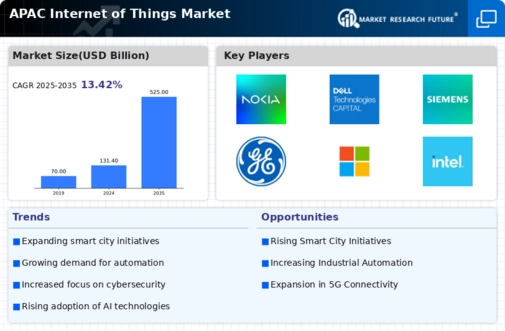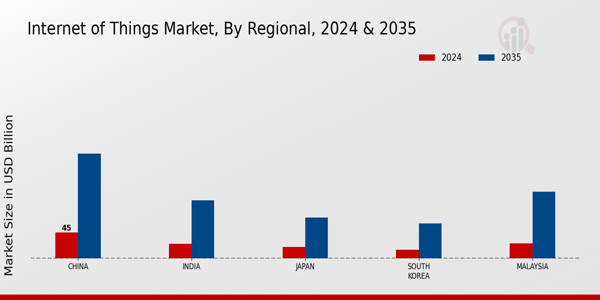The APAC Internet of Things market is characterized by rapid growth and dynamic competition among technology providers, driven by increasing connectivity and the proliferation of smart devices across various sectors. As businesses and governments alike embrace digital transformation, the demand for IoT solutions is surging, creating opportunities for both established players and new entrants.
The competition is not just about technology; it involves building strong partnerships, expanding product offerings, and catering to diverse industry needs. With diverse market participants, including telecoms, software developers, and hardware manufacturers, the landscape is continually evolving, making it essential for companies to innovate and differentiate themselves.
The APAC market's unique characteristics, such as varying regulatory environments and differing consumer preferences, add further complexity to the competitive dynamics within the IoT ecosystem.
Nokia stands out in the APAC Internet of Things market with a strong emphasis on providing end-to-end IoT solutions that focus on enabling ultra-reliable, low-latency communications. The company's strengths lie in its deep-rooted expertise in telecommunications, along with significant investments in network infrastructure, which empower seamless connectivity for IoT applications.
Nokia's presence in the APAC region is bolstered by strategic collaborations with regional telecom operators and industry leaders, enhancing its ability to deliver tailored IoT solutions for smart cities, industrial automation, and connected healthcare.
Furthermore, Nokia is committed to research and development, allowing it to stay at the forefront of technological advancements and cater to the evolving demands of the IoT market in the region.
Dell Technologies is actively engaged in the APAC Internet of Things market by offering a diverse range of products and services designed to support businesses in their digital transformation journeys. Through its integrated IoT Edge solutions, Dell Technologies provides hardware, software, and cloud services to enable data collection, analysis, and management at the edge.
The company's market presence rests not only on its advanced technology but also on its strong focus on customer partnerships, facilitating customizable solutions that cater to industry-specific requirements.
Additionally, Dell Technologies has pursued strategic mergers and acquisitions in the region to bolster its capacity in IoT deployment and strengthen its market foothold. Its robust ecosystem of partners enhances the company's ability to address the growing demand for IoT connectivity and analytics, positioning it as a leading player in the APAC market.












